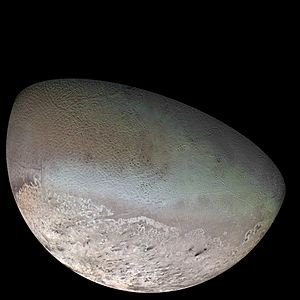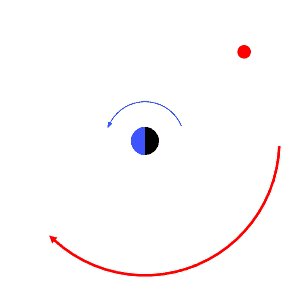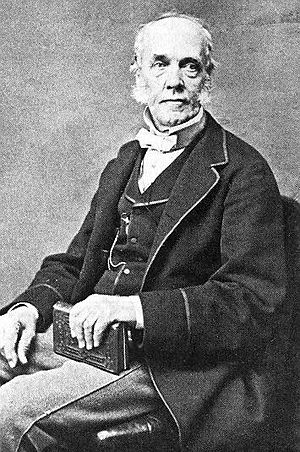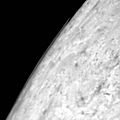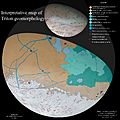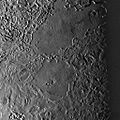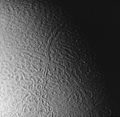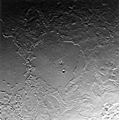Triton (moon) facts for kids
Triton is the biggest moon of the planet Neptune. It is the seventh-largest moon in our Solar System. Triton is a little smaller than Earth's own Moon. Scientists think Triton has a fairly new surface, meaning it has changed a lot since the Solar System formed.
Triton is the coldest place we know of in the Solar System. The space probe Voyager 2 measured its surface temperature at a super chilly -235°C (-391°F). Triton also has its own magnetic field and a very thin atmosphere.
There's a plan called Neptune Odyssey for a future NASA mission. It would send a spacecraft to orbit Neptune, focusing on Triton. This mission might launch in 2033 and reach Neptune by 2049.
Contents
How Triton Was Found and Named
A British astronomer named William Lassell found Triton on October 10, 1846. This was only 17 days after the discovery of Neptune itself! Another astronomer, John Herschel, suggested Lassell look for moons around Neptune. Lassell found Triton eight days later.
Lassell used a special telescope he built himself. It had a metal mirror 61 centimeters (about 2 feet) wide. This telescope was later given to the Royal Observatory, Greenwich.
Triton is named after the Greek sea god Triton. He was the son of Poseidon, who is the Greek god like the Roman Neptune. The name was first suggested in 1880. For many years, people just called it "the satellite of Neptune." This was because no other moons of Neptune had been found yet.
Triton's Unique Orbit
Triton is special because it has a retrograde orbit. This means it orbits Neptune in the opposite direction to Neptune's own spin. Most large moons in our Solar System orbit in the same direction as their planet spins.
Some smaller, distant moons of Jupiter, Saturn, and Uranus also have retrograde orbits. But Triton is much bigger and closer to its planet than any of them.
Triton's orbit is also very tilted. It is tilted about 157 degrees compared to Neptune's rotation. This tilt changes slowly over about 678 Earth years.
Triton is also tidally locked to Neptune. This means it always shows the same side to the planet, just like Earth's Moon always shows us the same face. As Neptune travels around the Sun, Triton's poles take turns facing the Sun. This causes seasons on Triton, with one pole getting sunlight and then the other. Scientists saw these changes happening in 2010.
Triton's orbit around Neptune has become almost a perfect circle. Over billions of years, Triton is slowly getting closer to Neptune. Scientists predict that in about 3.6 billion years, Triton will get too close to Neptune. It might crash into Neptune's atmosphere or break apart. If it breaks apart, it could form a new ring system around Neptune, similar to Saturn's rings.
Triton's Surface
We learned almost everything we know about Triton's surface from the Voyager 2 spacecraft. It flew past Triton in 1989. There are not many impact craters on Triton. This suggests its surface is quite young, maybe only 6 to 50 million years old.
Even though Triton is incredibly cold, its surface is active. Scientists have seen things that look like geysers, volcanoes, and even earthquakes there. But these are not like Earth's. The materials involved are very different.
Most of the gases on Triton, like nitrogen, are frozen solid. They only melt and turn into gas if the temperature goes up by a tiny amount, just 4 K (4°C or 7°F).
The surface also has deposits of "tholins." These are organic chemicals that might be important for how life began.
Images for kids
-
The Kuiper belt (green) is where Triton is thought to have come from.
-
The orbit of Triton (red) is different from most moons' orbits (green) in its direction and tilt.
-
This "cantaloupe terrain" on Triton was seen by Voyager 2.
See also
In Spanish: Tritón (satélite) para niños


